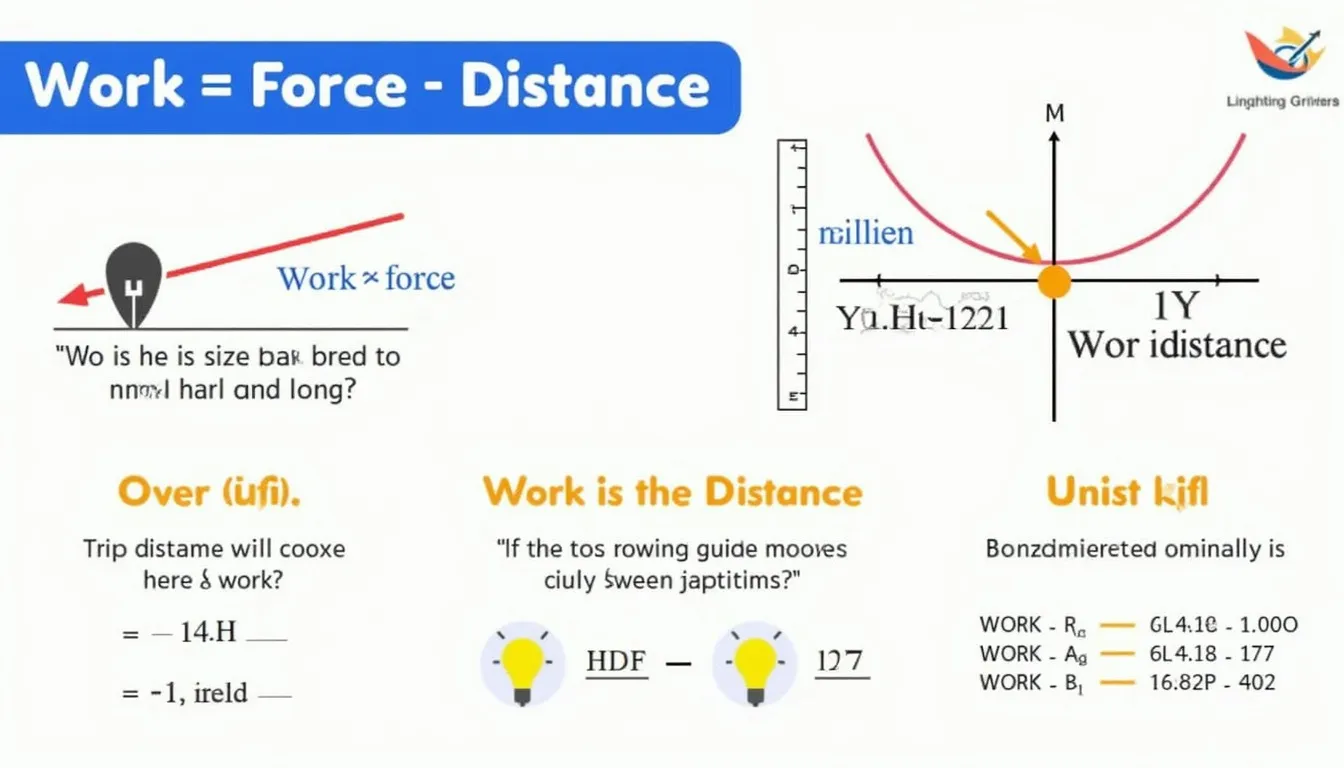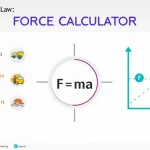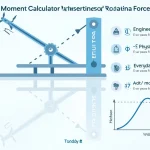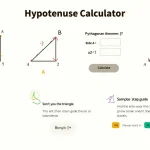Work Calculator
Is this tool helpful?
How to Use the Work Calculator Effectively
Our Work Calculator is a user-friendly tool designed to help you quickly and accurately calculate the work done in a physical system. To use the calculator effectively, follow these simple steps:
- Enter the force applied in newtons (N) in the “Force” input field.
- Input the distance traveled in meters (m) in the “Distance” input field.
- Click the “Calculate Work” button to obtain your result.
- The calculated work will be displayed in joules (J) below the form.
Remember to use only numerical values and ensure that you’re using the correct units (newtons for force and meters for distance) to get accurate results.
Introduction to the Work Calculator
The Work Calculator is an essential tool for students, educators, and professionals in physics, engineering, and related fields. It simplifies the process of calculating work, which is a fundamental concept in physics and mechanics. Work is defined as the product of force applied to an object and the distance the object moves in the direction of the force.
The mathematical formula for work is:
$$W = F \cdot d$$
Where:
- W = Work (measured in joules, J)
- F = Force (measured in newtons, N)
- d = Distance (measured in meters, m)
Our Work Calculator automates this calculation, providing quick and accurate results for various applications in physics, engineering, and everyday scenarios.
Benefits of Using the Work Calculator
Utilizing our Work Calculator offers numerous advantages:
- Time-saving: Quickly perform calculations without manual computations.
- Accuracy: Minimize human error in calculations.
- Consistency: Ensure reliable results across multiple calculations.
- Educational value: Reinforce understanding of work, force, and distance relationships.
- Versatility: Applicable to various scenarios in physics and engineering.
- Accessibility: Available online for easy use anytime, anywhere.
Addressing User Needs and Solving Specific Problems
The Work Calculator addresses several key user needs and solves specific problems:
1. Simplifying Complex Calculations
For students and professionals alike, manual calculations of work can be time-consuming and prone to errors. Our calculator streamlines this process, allowing users to focus on understanding concepts rather than getting bogged down in arithmetic.
2. Enhancing Learning and Teaching
Educators can use this tool to demonstrate the relationship between force, distance, and work. Students can verify their manual calculations, gaining confidence in their problem-solving skills.
3. Supporting Engineering and Physics Projects
Engineers and physicists often need to calculate work in various scenarios. This calculator provides a quick way to estimate work in different systems, from small-scale laboratory experiments to large industrial applications.
4. Improving Efficiency in Practical Applications
In real-world scenarios, such as construction or machinery operation, understanding the work involved can help optimize processes and improve energy efficiency. Our calculator facilitates quick estimations for such practical applications.
Practical Applications and Examples
The Work Calculator has a wide range of practical applications. Here are some examples to illustrate its versatility:
1. Construction and Engineering
Imagine a construction project where a crane needs to lift a 1000 kg steel beam 15 meters high. The force required to lift the beam is approximately 9800 N (the weight of the beam). Using our calculator:
- Force = 9800 N
- Distance = 15 m
- Work = 9800 N * 15 m = 147,000 J
This calculation helps engineers determine the energy requirements for the crane and plan accordingly.
2. Fitness and Exercise Science
A fitness trainer wants to calculate the work done by an athlete pushing a 50 kg weight sled for 20 meters. Assuming the force applied is 200 N:
- Force = 200 N
- Distance = 20 m
- Work = 200 N * 20 m = 4,000 J
This information can be used to track an athlete’s performance and design more effective training programs.
3. Automotive Engineering
An automotive engineer is designing a car’s braking system. They need to calculate the work done by the brakes to stop a 1500 kg car traveling at 100 km/h (about 27.78 m/s) over a distance of 50 meters. The force required can be calculated separately, but let’s assume it’s 8000 N:
- Force = 8000 N
- Distance = 50 m
- Work = 8000 N * 50 m = 400,000 J
This calculation helps in designing an efficient braking system and understanding the energy dissipation during braking.
4. Physics Education
A physics teacher demonstrates the concept of work by pushing a 5 kg book across a 2-meter table with a force of 10 N:
- Force = 10 N
- Distance = 2 m
- Work = 10 N * 2 m = 20 J
This simple example helps students visualize the concept of work in everyday scenarios.
Frequently Asked Questions (FAQ)
1. What is work in physics?
Work in physics is defined as the product of force applied to an object and the distance the object moves in the direction of the force. It is a measure of energy transfer and is typically expressed in joules (J).
2. How accurate is the Work Calculator?
The Work Calculator provides results rounded to two decimal places, which is sufficient for most practical applications. However, the accuracy of the result depends on the precision of the input values for force and distance.
3. Can the Work Calculator handle negative values?
Yes, the calculator can handle negative values for force or distance. A negative result indicates that work is being done against the direction of the force.
4. What units does the Work Calculator use?
The Work Calculator uses newtons (N) for force, meters (m) for distance, and outputs the result in joules (J).
5. How does the Work Calculator relate to energy?
Work and energy are closely related concepts in physics. The work done on an object changes its energy. The unit of work (joule) is the same as the unit of energy, reflecting this close relationship.
6. Can the Work Calculator be used for inclined planes?
The basic Work Calculator assumes the force is applied in the same direction as the movement. For inclined planes, you would need to consider the component of the force parallel to the plane. Our calculator can still be used if you input this parallel component of force.
7. How does the Work Calculator handle very large or very small numbers?
The Work Calculator can handle a wide range of numbers. For very large or very small results, scientific notation may be used in the output for clarity.
8. Is the Work Calculator suitable for advanced physics problems?
While the Work Calculator is excellent for basic work calculations, more complex physics problems may require additional considerations such as varying forces or non-linear paths. In such cases, more advanced tools or methods might be necessary.
9. Can I use the Work Calculator for homework or exams?
The Work Calculator is a great tool for checking your work or understanding concepts. However, in academic settings, it’s important to learn how to perform these calculations manually as well. Always follow your instructor’s guidelines regarding calculator use.
10. How often is the Work Calculator updated?
We strive to keep our calculators up-to-date and accurate. However, it’s always a good idea to verify critical calculations using multiple methods or sources.
Please note that while we strive for accuracy, we cannot guarantee that the webtool or results from our webtool are always correct, complete, or reliable. Our content and tools might have mistakes, biases, or inconsistencies.
Conclusion: Harnessing the Power of the Work Calculator
The Work Calculator is an invaluable tool for anyone dealing with physics, engineering, or related fields. By simplifying the calculation of work, it allows users to focus on understanding concepts, solving complex problems, and applying knowledge in practical scenarios.
Key benefits of using our Work Calculator include:
- Time-saving automation of calculations
- Improved accuracy and consistency in results
- Enhanced learning and teaching of physics concepts
- Support for various practical applications in engineering and science
- Accessibility and ease of use for students, professionals, and enthusiasts alike
Whether you’re a student grappling with physics homework, an engineer designing complex systems, or simply curious about the world around you, our Work Calculator is here to assist you. It bridges the gap between theoretical understanding and practical application, making the concept of work in physics more tangible and accessible.
We encourage you to explore the capabilities of our Work Calculator. Experiment with different force and distance values to see how they affect the work done. Use it as a learning tool, a problem-solving aid, or a quick reference in your projects.
Remember, understanding work and energy is crucial in many aspects of science and engineering. By mastering these concepts and utilizing tools like our Work Calculator, you’re equipping yourself with valuable knowledge and skills for the future.
Start calculating now and unlock new insights into the physical world around you!
Important Disclaimer
The calculations, results, and content provided by our tools are not guaranteed to be accurate, complete, or reliable. Users are responsible for verifying and interpreting the results. Our content and tools may contain errors, biases, or inconsistencies. We reserve the right to save inputs and outputs from our tools for the purposes of error debugging, bias identification, and performance improvement. External companies providing AI models used in our tools may also save and process data in accordance with their own policies. By using our tools, you consent to this data collection and processing. We reserve the right to limit the usage of our tools based on current usability factors. By using our tools, you acknowledge that you have read, understood, and agreed to this disclaimer. You accept the inherent risks and limitations associated with the use of our tools and services.







